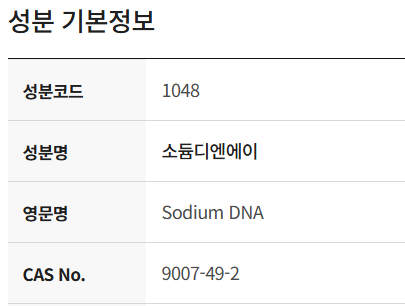Why Is PDRN Gaining Attention in the Cosmetics Industry Now?
When planning a functional cosmetic product, understanding the **core active ingredients** is essential for ensuring product competitiveness. One such ingredient, **PDRN**, has recently gained significant traction, with numerous brands adopting it in their formulations.
However, for those unfamiliar with the ingredient—or unclear about its origin and mechanism—it can be challenging to decide how best to apply it in product development. This article provides a practical overview of **what PDRN is, how it’s used in cosmetics, and key considerations for product planning.**
What Is PDRN?
PDRN stands for Polydeoxyribonucleotide, which refers to a structure composed of multiple fragments of DNA. “Deoxyribonucleotide” is the basic unit of DNA, and the prefix “Poly-” means these units are linked together.
In essence, PDRN is a refined DNA fragment that is recognized for its ability to promote **skin regeneration and cellular activity**.

Main Source and Production of PDRN
Commercially used PDRN is typically derived from **salmon sperm cells**. After extracting the cells, DNA is separated, purified, fragmented into a specific size, and stabilized with protective agents.
Due to its **animal-derived nature**, stringent purification and quality control are essential to ensure safety and efficacy—making it a reliable ingredient in skincare formulations.

How Does PDRN Affect the Skin?
PDRN stimulates skin cell receptors to accelerate tissue regeneration and enhance collagen and elastin production.
This leads to improved skin **elasticity**, **soothing**, and **anti-inflammatory** effects. Some studies also suggest its potential for **DNA repair**.
Its safety and efficacy have been widely recognized—not just in skincare, but also in **medical devices and injectables**.
When used in cosmetics, however, PDRN appears in the ingredient list as **Sodium DNA**. This is because the DNA is stabilized in its **sodium salt form** for cosmetic application, ensuring safety and compatibility with the skin.

Source: Korea Cosmetic Association Ingredient Dictionary
Plant-Derived PDRN and the Growing Vegan Trend
As concerns around animal-derived ingredients grow and the vegan trend accelerates, **plant-based alternatives to PDRN** are being actively developed.
Recent developments include botanical analogs sourced from **rose petals, spinach leaves**, and other plants—allowing for broader ingredient selection and marketing options.
For brands targeting vegan-conscious or fragrance-sensitive consumers, **plant-derived PDRN can serve as an ideal substitute**.
However, since PDRN is a biological material, **quality control, formulation stability**, and **sensitivity testing** are crucial. For sensitive skin product lines, it’s essential to plan from the early stages—considering **PDRN concentration**, **formulation compatibility**, and **synergy with other actives**.
In Closing
PDRN is more than just a trendy ingredient—it’s a highly effective material for long-term **skin regeneration and repair-focused skincare lines**.
For brand planners seeking product differentiation, it’s vital to understand the **ingredient’s origin, naming conventions, formulation suitability, and application strategy** in depth.
💡 FactoSquare has supported numerous brands in applying PDRN through real-world projects, accumulating meaningful formulation data.
If you’re exploring functional ingredients or planning a product launch with small-batch production, don’t hesitate to reach out. We provide optimal, practice-based solutions from the early planning stage onward.



